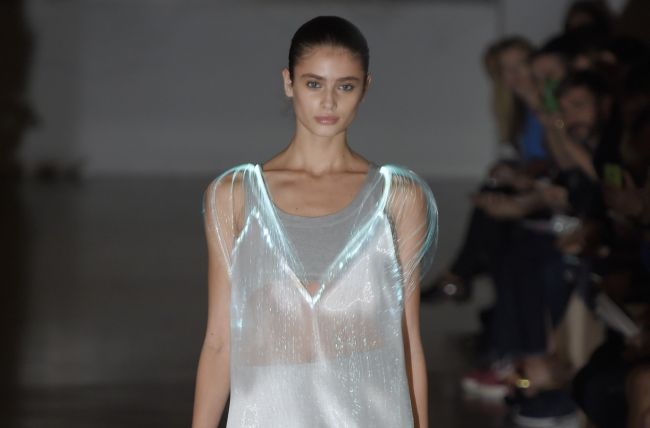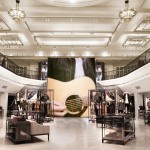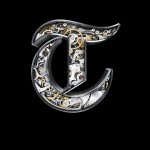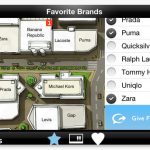When will wearable technology become ready to wear?
Apple’s iWatch launch gave the discussion around wearable technology a new boost for the fashion industry. However, as a recent article in The Guardian states: “the reality is that wearable technology is still very much on the margins of fashion. No fashion brand alignment will fix the awkwardness of the technology.”
With this in mind, we at The Future of Luxury wanted to know more about who are the leading fashion designers that embrace wearable technology in their collections? And which skills need to be adapted to bring it to the market?

Richard Nicoll Tinkerbell London Fashion Week 2014
Within the fashion industry, wearable technology refers to “smart fabrics” that allow the wearer to make use of a particular technology, while significantly enhancing the user’s experience as a result of the garment being worn. The added functionality to the fabric requires high investments in research and development, however according to a recent study by Forbes it is an investment with promising returns. Forbes projects revenues from wearable technology to reach $20 billion by 2017.
In the last few years the fashion industry has seen more and more promising launches that fall under the category of wearable technology, such as the Ralph Lauren’s heart rate measuring poloshirt, and most recently the launch of the iWatch. Not surprisingly, success stories mostly come from established brands especially within sports and accessories, where smart devices have an obvious impact and financial resources can be dedicated to R&D. At the same time smaller scale projects, such as Richard Nicolls’ Tinker Bell Collection and Fyodor Golan’s Nokia Lumia phone skirt have come about via collaboration with big technology and entertainment brands.
These examples show that a first step in the right direction has been made, but much more needs to be done until wearable tech will change the way we dress. The high investment and specific knowledge required is a big ask for most fashion designers. At the moment we don’t have enough information as to whether such fabrics actually are feasible, if they will ever be affordable, and if people will actually wear them.
Besides, smart fabrics straddle complete opposite worlds; while the intention of technology is to solve a problem, fashion is primarily built upon aesthetics. The main challenge is to find a way to reconcile technology and aesthetics to transform products we need into garments we want. To achieve this, most likely these issue needs to be addressed in a more agile and innovative way: through collaboration.
This is also how Apple approached the iWatch launch. Over several months Apple has made some crucial hires of key executives from some of the most successful international fashion labels, while market acceptance has been reinforced through close collaboration with leading fashion editors. The outcome was seen on the cover of Vogue China.
If collaboration is the answer to ready-to-wear technology, then presumably fashion designers should approach the design process in conjunction with tech experts. Why don’t we see this happen more often? Perhaps the answer is to matchmake fashion designers with technology start-ups, however this is easier said than done.
Designers that already approach their design process through collaboration, such as Craig Green, have worked with textile, knit and sculpture experts for years; he has surrounded himself with the right people from day one, as a kind of collective. Similarly, the MA course Material Futures at Central Saint Martins works to incorporate digital collaboration with the MIT into the curriculum, fostering partnerships at the early stages of creativity.
The more we talk about the topic and learn what’s been successful, the more organic our learning process in this field will be, thus reducing the risk for small design labels to invest in the future of wearable technology.
This article has been written in collaboration with Katie Rose. Katie Rose is a freelance consultant and writer who has contributed to such titles as i-D, Dazed Digital, Heroine and Twin. Over 2 years as Project Coordinator at non-profit designer support scheme Fashion East, she worked with over 30 emerging brands, assisting them with everything from showcasing at London Fashion Week, to handling budgets. In 2014 she started her own consultancy, The Bridge Co. to help emerging designers master the business side of fashion and link up with the right partners. She currently works with brands including Claire Barrow, Timur Kim and Ashley Williams.











